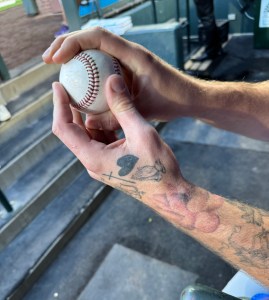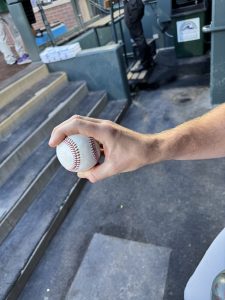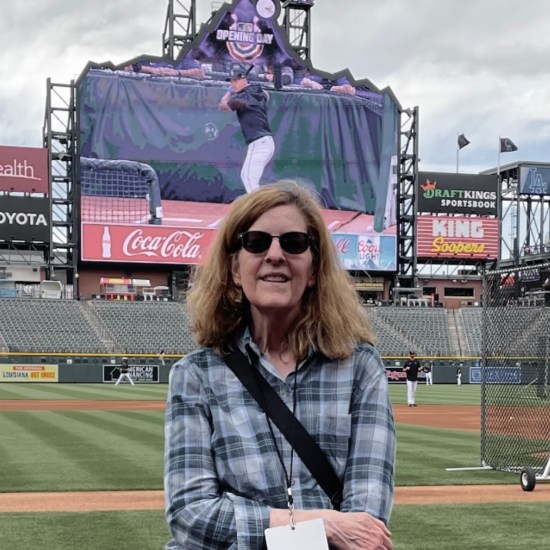Pitcher List Conversations are transcripts of interviews with professional baseball players — and sometimes, they discuss topics other than baseball. This has been lightly edited for clarity.
★ ★ ★
What a year it was from Michael Kopech.
He began 2024 with the Chicago White Sox as he transitioned from the rotation to the bullpen, a move that suited him — he struck out 59 batters over 43.3 innings on a team that was already bad and would only get worse, as in historically worse.
It had already been a tough season for Los Angeles Dodgers pitching, and they sure liked his fastball velocity (99th percentile) and his whiff percentage (86th percentile).
The move for him was an easy one, going from MLB’s cellar to one of the most-dynamic teams in the sport.
When the Dodgers played the Colorado Rockies during the final weekend of the MLB season, I spoke with Kopech about a number of topics, including adjusting to his new team,
Plus, finishing this Pitcher List series by talking with a closer just seemed like the right thing to do.
★ ★ ★
Renee Dechert: You’re not with Chicago anymore. What has the change been like for you?
Michael Kopech: It’s kind of hard to put into words to be honest. I worked hard over there. I enjoyed my time with the White Sox, but since I’ve come over here, everything about the atmosphere, the acceptance of everyone, it’s just been uplifting. To be honest with you, I feel like I’m blessed to be here. So the transition has been pretty seamless. I don’t know if I could tell you a specific thing that happened as far as pitching stuff goes, but the mentality changed when I got here.
RD: Clearly, the Dodgers and the White Sox have very different approaches. How have the Dodgers employed you differently than you were before?
MK: They just reiterated that they believe in what I have. And so when I first got here, they were just like, we just want you to go do what you do. We changed some things. We talked about tightening up the slider. And for most part, it was just telling me to go out there and pitch with what I have, and I’ve been encouraged to do that.
RD: I’m glad that you brought up your slider because I wanted to ask about that. It’s changed a bit in Los Angeles compared to what you had in Chicago. You’re throwing it harder, but it also seems to have a different shape, including a cutter. What’s up with your slider?
MK: To be honest, it changes game to game.
RD: Tell me about that.
MK: So when I first got over here, it was the same grip I’ve been using. I just was throwing it with a little more intent, changing my mindset about it, staying behind it longer. Basically, the term I use is trying to make it go straight for as long as possible because I know it’s going to catch and break at some point.
Over the course of time, it ended up getting a little bit slower. And it was starting to be seen well out of hand it felt like.
So I’ve just since then, played around with different locations of grips, my hand position on the ball. What can make harder? What can make it late break? It’s been up and down, though. So there’s not a set grip right now. They call it a cutter, but it’s truly more of a slider, but I’m just trying to throw it hard.
RD: I’m going to ask to take a photo of your slider grip.
MK: Like I said, I don’t really have a set one, so I don’t know if I could give you one. I can make one up for you.

Michael Kopech Fastball Grip

Michael Kopech Slider Grip
RD: Adam Ottavino told me that pitchers change grips all the time.
MK: Yeah, for sure.
For me, it’s essentially the same grip I’ve had all the way back to the end of last year.
But it’s just seam orientation. So it’s how deep I get the ball in my hand, how much I want to grab, like, hook over the ball, fingertip pressure. Am I rolling off my index and my middle finger? Am I rolling off just my middle finger? Stuff like that.
So if I showed you the grip, it might look pretty plain Jane, but it’s the subtle differences that make the big difference.
RD: You’ve transitioned to relief. What was that like for you? Were you resistant at first?
MK: Not necessarily.
I had done it before. In ‘21, I pitched out of relief. I did a little bit of everything in ‘21. And then I wanted to have success as a starter with the White Sox and just never really came through.
And then when they moved me to the bullpen, it was just a matter of what I can do to have the most success I could down there. And it took a little bit, but I realized that if I could fit into the role, I would like to be a closer, and then I quickly transitioned in that position but then still wasn’t having a lot of success.
And so since I’ve been over here, having a bunch of guys that can do the same job, essentially, and kind of fit in wherever Dave Roberts wants us to go, it’s made the transition a lot easier.
RD: What it like to close? What does that feel like?
MK: I don’t know if I could really put into words the energy.
There’s two big feelings as a pitcher to me. And one is throwing the first pitch of the game, and one throwing the last pitch of the game. And they’re very different, but they’re both one-of-a-kind type of energy.
And I think throwing the last pitch has a lot of excitement behind it — the stadium roar, the dugout coming out to meet you on the field. It’s just a really cool experience.
And the goal is to have that feeling for the last out of the World Series — not necessarily for me, although that would be awesome — but just somebody in this clubhouse closing out the last pitch of the World Series.
RD: So just three more from me. What’s your favorite pitch you’ve thrown this season?
MK: There’s one that comes to mind. So against Pittsburgh. I was throwing my fastball the same way I always do — up in the zone, up in the zone — and then I threw a couple down in the zone, which helped set up a slider in the dirt.
And I threw probably the biggest hard slider I’ve thrown in the season to Oneil Cruz. So it was 93, started at the bottom of the zone and just went right in the dirt. In my opinion, just optically, it was the best pitch I’ve thrown this year. I don’t know if that would track as far as metrics goes, so I don’t want to, like —
RD: That’s not what the question asked.
MK: Yeah, that’s the one I felt most confident in.
RD: If you could steal a pitch from any other pitcher, what would you take and why?
MK: There’s a lot of guys in this clubhouse that I could probably go and take from.
Let’s see.
So I guess I’ll just stick with a right-handed pitcher because I could pick from the Mount Rushmore of pitches and go Chris Sale’s slider or something. But I’m not left handed,
I think Blake Treinen has an incredible slider, and I don’t know anything about the metrics of it, but watching that pitch, it looks like it breaks twice, and the way it pulls hitters is pretty incredible. So I’d probably say his slider.
RD: What’s it like, being on a team with Shohei Ohtani?
MK: It’s unbelievable. It’s hard to even describe how good he is and how special what he’s doing really is. But for the past, I don’t know, months, he’s making history every time it touches the field, so it’s been really cool to watch and be a part of and for us to all get to celebrate together.
There’s a lot of special guys in there but he somehow still finds a way to stand alone.

